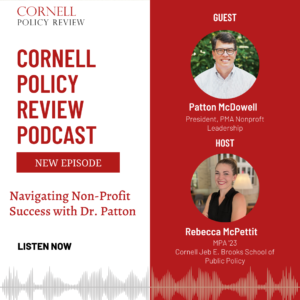edited by Clare O’Brien
Ethical business practices and industry-wide corporate responsibilities need to extend beyond the private sector. In a national survey of nonprofit employees, over 50 percent of those polled shared that they observed at least one act of misconduct in the workplace during the previous year. In the same survey, employees working in the for-profit and government sectors observed approximately the same degree of unethical behaviors.[1] Many nonprofit organizations outwardly support missions or initiatives that promote social good, yet they fail to practice that same goodness within their internal operations. In the private sector, profit maximization has historically been the single most important figure to measure success, yet in recent years there has been a nascent but powerful movement in the private sector that also measures environmental and social implications, or the “triple bottom line.” This approach to business has been popularized as “corporate social responsibility” (CSR) and is becoming more structured and legitimized with third party certifiers. Commitments made by businesses include the B Lab, and global enterprises such as Unilever, Virgin Group, Salesforce, etc. Although there is already a saturation of labels representing business practices, the B Lab label or CSR commitments go deeper than addressing one level within a supply chain. Meanwhile the nonprofit, or plural sector, lacks a similar framework that allows donors to better understand business ethics. The sector, especially with its rapid growth and development, should develop a CSR framework as the private sector, to strengthen transparent and ethical business practices and bolster the industry.
The 501(c)(3) nonprofit sector, which was valued at $905.9 billion in 2013, has been growing at an accelerated rate with 1.41 million organizations registered also in 2013.[2] The work led within the sector varies but the general perception is that they are mission driven and provide social services–direct or indirect, and that the money they receive is reinvested into their organization and mission. Even with the rapid growth and intense competition for in-kind and financial resources, the nonprofit/plural sector has not developed a CSR framework or set of principles which could set organizations apart from one another and create a stronger sector. Without a CSR movement and commitments in the sector, there is more room for fraudulent cases to take place, such as a nonprofit exposed for executing internal and external behaviors that are illegal, counterintuitive, or hypocritical to their mission. The Red Cross’s manipulative response in its handling of relief efforts following the 2010 Haitian earthquake comes to mind.[3] Still, less sensational cases abound that demonstrate the importance of nonprofits’ developing a CSR framework as well as committing to it. While ensuring that any surplus funds are reinvested back into the organization and propelling the mission set out by an organization, consistently operating at a higher standard and abiding by a framework could create deeper returns on areas beyond the specific mission, recognizing the importance of the “triple bottom line.” Many nonprofits do good work that reaches above and beyond their mission, but they fall short of stimulating a wider and more meaningful movement, or providing continuity or commitments to CSR. As seen in the for-profit arena, developing a CSR movement and framework can have a positive ripple effect across the entire sector.
Investments from endowments should be transparent and with an ethical lens and, if possible, tied to their mission.
Endowments for nonprofits act as long-term securities and safety nets. The size and annual returns on their endowments are often the primary markers of success by which organizations are judged. Nonprofits often work to grow their endowments through diversified standard financial portfolios and are legally able to invest in any initial public offering. To secure endowment growth, many nonprofits invest in public companies with high profit yields, and focus on the finances, rather than the ethical implications, of their investment choices. For example, “[a] foundation donated around $50,000 to an immigrant rights organization… [while] its endowment simultaneously holds nearly $75,000 worth of shares in the parent company of the detention center against which it’s advocating.”[4] Nonprofits have the ability to invest in any IPO without any ramifications, which can create hypocritical practices, as seen in the example above. That being said, there are nonprofits that have independently committed to investing or divested from investments in certain areas because of their mission or values. For example, Stanford University, along with many other diverse nonprofits have divested stocks from their portfolios in fossil fuel companies, noting that doing so brought their investment strategy in line with their missions.[5] This is an important step that aligns with CSR principles though without a proper framework, such trends can be seen as “one-offs” and fail to put pressure on other organizations to do the same. If a nonprofit is committed to its mission, an important component of a CSR framework for the sector must be to invest in businesses that are socially responsible at a minimum and at best are aligned with the nonprofit’s mission.
Funders/grantmakers should fund internal and external CSR practices for their grantees through grant-making.
Funders and donors provide much of the capital to support nonprofit operations and projects. This means that the funder, as a partner, can be a driver of CSR within the nonprofit sector using enhanced grant management practices. To do this, funders should more deeply work to understand their grantees’ organizational structures and should include the capital within grants or restricted funds to allow grantees to fulfill the grants requirements through the triple-bottom-line lens. There are a few examples of funders that have begun to support components of CSR when grant managing, though the sector lacks a network or movement that donors can commit themselves to. The Langeloth Foundation grants through an environmentally focused model of, “count, reduce, and offset.” The organization has developed many ways in which other grantors can issue grants in a more environmentally sustainable way that do not deter from the overall project. Carrying out operations in an environmentally sustainable manner is just one of the legs or CSR, so to fully work in this space, funders will need to consider societal returns as well. The true essence of CSR is to have a set of principles which corporations can adopt to their daily and programmatic work.
While many grants are provided to address a societal issue and environmental issues, the key is to think about meeting both within a grant. If, for example, you are funding conservation work, you might require that the work is done through a socioeconomic, racial or gender lens or includes focus grouping. In doing so, the project generates both environmental and societal returns. This will additionally enhance transparency and partnerships as grantors will be obliged to more deeply understand the whole context of the grantees’ operations, rather than just the specific project being funded. In doing so, cutting corners and behaving less ethically will be diminished and organizations can operate through the lens of meeting the triple bottom line.
Funders can include questions and require documentation within their request for proposals that allow organizations to indicate how they will meet the CSR principles in their work. In this case, the CSR can be more meaningful if the RFP, for example, also includes questioning that relates to climate change and carbon-neutral program implementation. Incorporating a “triple bottom line” focus and line of questioning into grantmaking might require larger grants to be awarded to support the three-pronged outcomes and broaden the actions of nonprofits to include CSR as a fundamental action.
The board should have representation from an alumna of its program, and/or a content expert.
The board of directors of a nonprofit organization has great power and authority over the organization’s work plan, investments, and leadership. This board is usually comprised of an elite group who are expected to donate a significant amount annually to the organization. A person who was once a recipient of the organization’s services, or who has extensive knowledge in the subject matter, but does not have significant financial resources, is seldom a board member. Organizations that do not have boards with representation from the people or cause they serve are missing a critical opportunity to strengthen their impact. New Housing Hope, a nonprofit supporting housing for low-income families, recently appointed Kristina Jorgenson, a formerly homeless and a resident of the organization’s housing, to the board. Jorgenson stated in an interview regarding the new appointment, “Let’s have people who have experienced these things help at the policy level.” The organization, which has a history of including those that they serve on their board has been able to more acutely address issues because of the diverse perspectives represented within the board.[6] Board composition speaks volumes about an organization. Applying a CSR lens to designing a board would mean that there would be representation from recipients or experts.
The plural sector is a collection of corporations that are not driven by profit gains, yet still conduct business and can strive to operate using CSR principles. This sector also has the opportunity to develop its own set of applicable standards and certifications for marketing, branding, and internal and external operations and practices. The “Fair Trade”, “Forest Alliance” and “B-Lab” emblems are socially responsible stamps of approval for many consumers. The nonprofit sector could benefit from its own version of these logos as a recognizable CSR merit badge for discerning donors and other stakeholders.
While these suggestions are by no means exhaustive, they highlight the opportunity for the plural sector to adopt these principles and infuse this philosophy into mission and programming. Ultimately, a healthier and more sustainable society and environment, is a worthy and attainable goal.
References
- “Ethics and Nonprofits,” Deborah L. Rhode & Amanda K. Packel, The Stanford Social Innovation Review, Summer 2009. https://ssir.org/articles/entry/ethics_and_nonprofits ↑
- “The Nonprofit Sector in Brief 2015,” Brice S. McKeever, The Urban Institute, October 2015. http://www.urban.org/sites/default/files/alfresco/publication-pdfs/2000497-The-Nonprofit-Sector-in-Brief-2015-Public-Charities-Giving-and-Volunteering.pdf ↑
- “How the Red Cross Raised Half a Billion Dollars for Haiti and Built Six Homes,” Justin, E., Sullivan, L., ProPublica, June 2015. https://www.propublica.org/article/how-the-red-cross-raised-half-a-billion-dollars-for-haiti-and-built-6-homes ↑
- “Impact by Aligning Their Finances with Their Mission,” 3PContributor, Triple Pundit, October, 2016. http://www.triplepundit.com/2016/10/ngos-can-increase-impact-aligning-finances-mission/ ↑
- “Oregon State University opts to dump fossil fuel investments,” Diane Dietz, The Register-Guard, January 24, 2017. http://registerguard.com/rg/news/local/35206892-75/oregon-state-university-opts-to-dump-fossil-fuel-investments.html.csp ↑
- “New Housing Hope board member was homeless herself,” Julie Muhlstein, The Herald Net, April 7, 2016, http://www.heraldnet.com/news/new-housing-hope-board-member-was-homeless-herself/ ↑





